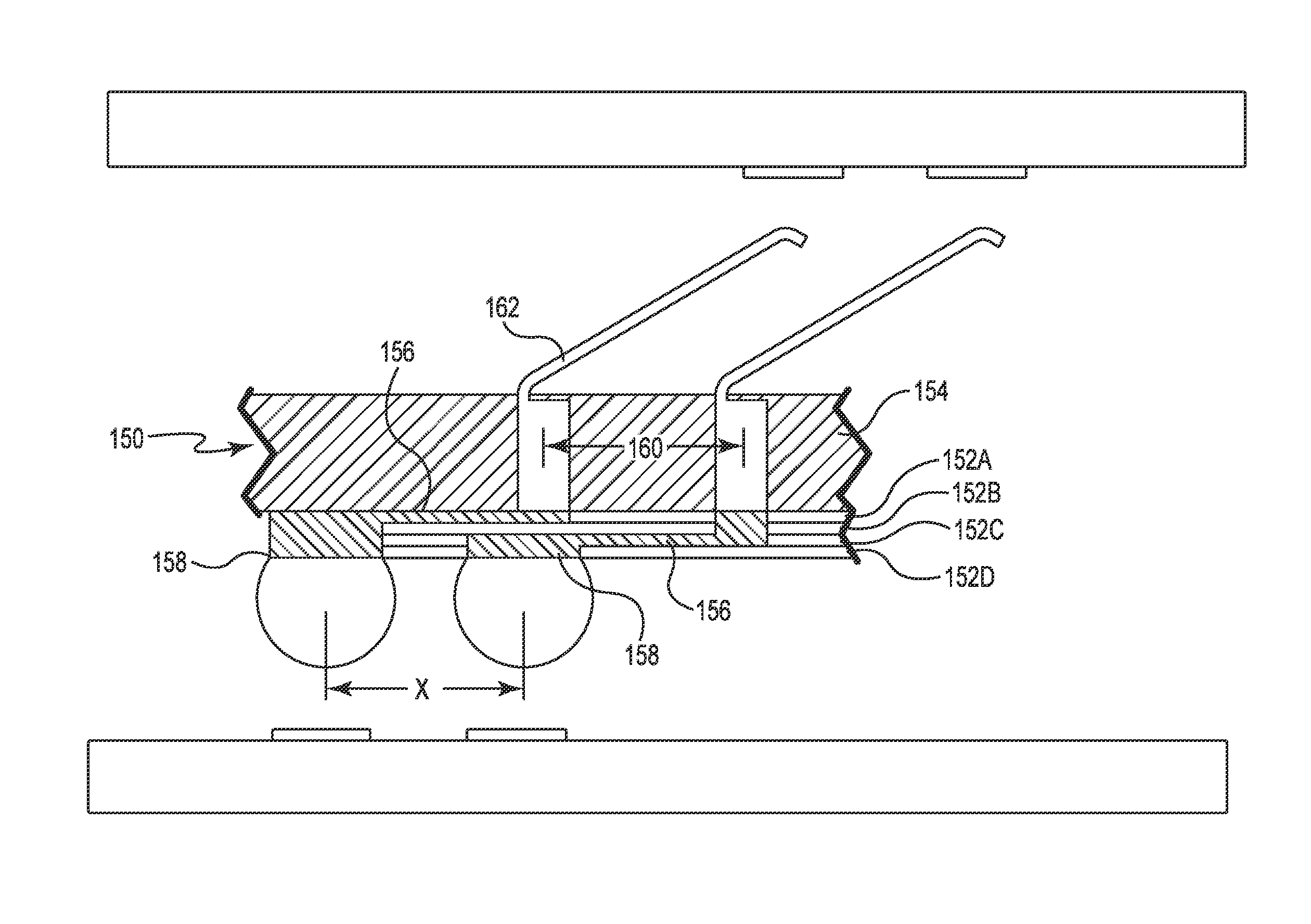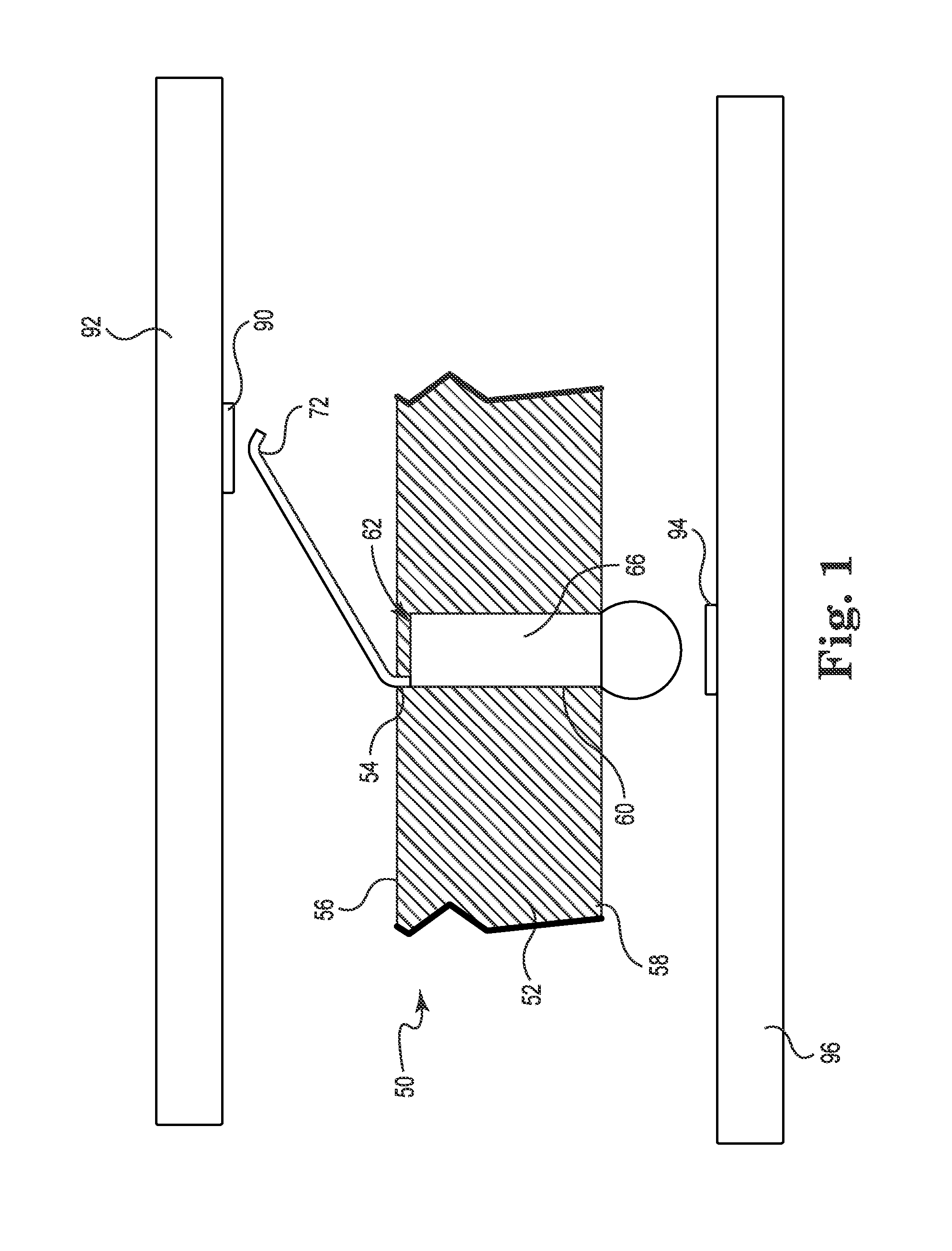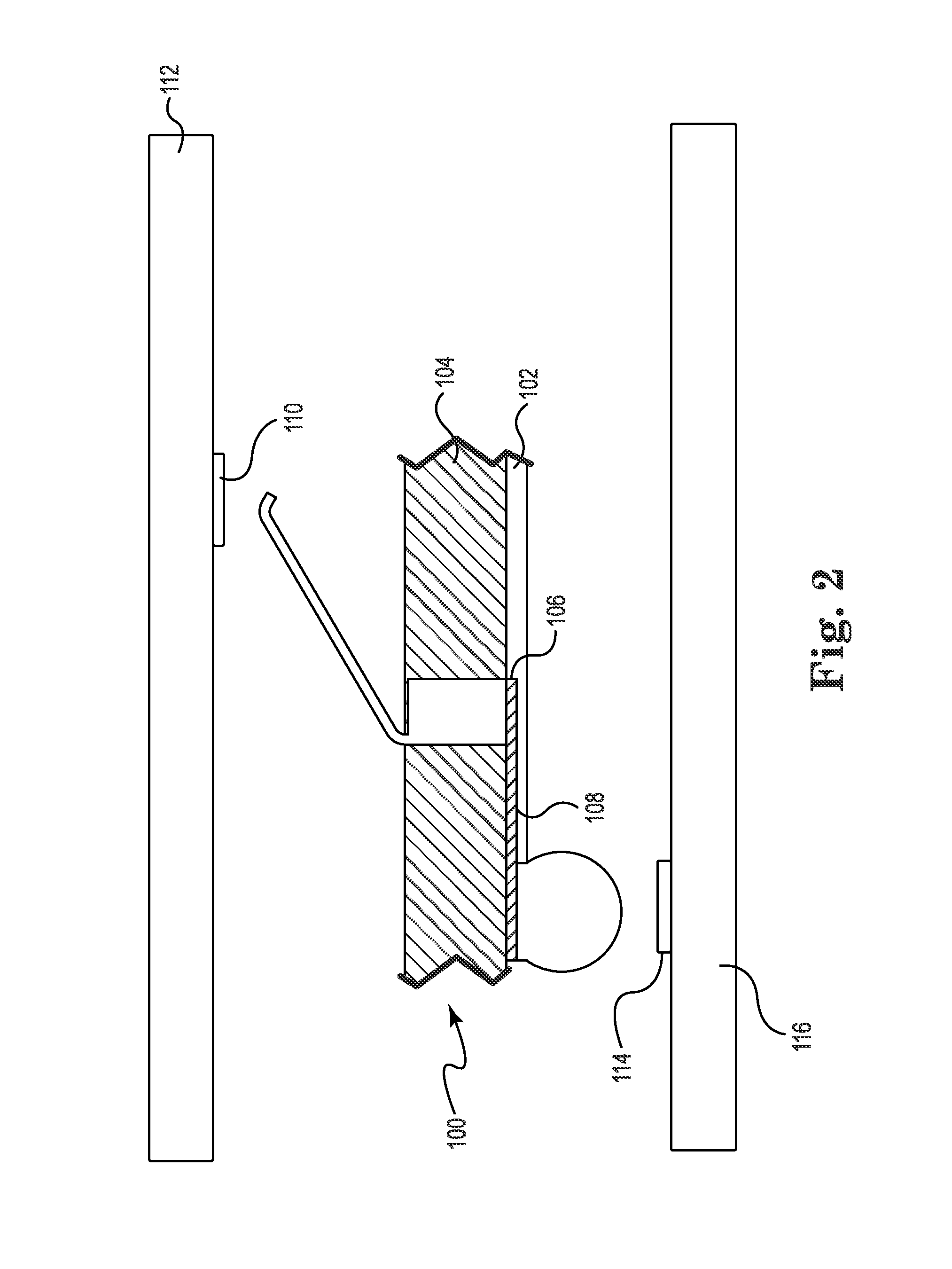Method of forming a semiconductor socket
a technology of semiconductor sockets and sockets, applied in the direction of fixed connections, electrical apparatus construction details, printed circuit aspects, etc., can solve the problems of mechanical and electrical limitations of traditional devices, limiting the space available for locating springs or contact members that can deflect, and reducing the surface area available for placing contacts. , to achieve the effect of improving electrical performance or internal function and intelligence, improving the reliability of solder joints, and enhancing substrates
- Summary
- Abstract
- Description
- Claims
- Application Information
AI Technical Summary
Benefits of technology
Problems solved by technology
Method used
Image
Examples
Embodiment Construction
[0037]A semiconductor socket in accordance with the present disclosure permits fine contact-to-contact spacing (pitch) on the order of less than 1.0 millimeter (1×10−3 meter), and more preferably a pitch of less than about 0.7 millimeter, and most preferably a pitch of less than about 0.4 millimeter. Such fine pitch semiconductor sockets are especially useful for communications, wireless, and memory devices. The disclosed low cost, high signal performance semiconductor sockets, which have low profiles and can be soldered to the system PC board, are particularly useful for desktop and mobile PC applications.
[0038]The disclosed semiconductor sockets may permit IC devices to be installed and uninstalled without the need to reflow solder. The solder-free electrical connection of the IC devices is environmentally friendly.
[0039]FIG. 1 is a side cross-sectional view of a portion of a semiconductor socket 50 in accordance with an embodiment of the present disclosure. A substrate 52 include...
PUM
| Property | Measurement | Unit |
|---|---|---|
| aspect ratio | aaaaa | aaaaa |
| aspect ratio | aaaaa | aaaaa |
| width | aaaaa | aaaaa |
Abstract
Description
Claims
Application Information
 Login to View More
Login to View More - R&D
- Intellectual Property
- Life Sciences
- Materials
- Tech Scout
- Unparalleled Data Quality
- Higher Quality Content
- 60% Fewer Hallucinations
Browse by: Latest US Patents, China's latest patents, Technical Efficacy Thesaurus, Application Domain, Technology Topic, Popular Technical Reports.
© 2025 PatSnap. All rights reserved.Legal|Privacy policy|Modern Slavery Act Transparency Statement|Sitemap|About US| Contact US: help@patsnap.com



